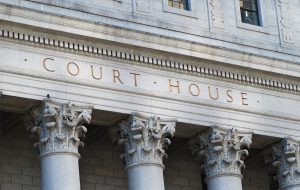
The New Mexico Court of Appeals recently concluded that a foreclosure action was not barred by the statute of limitation where a borrower made good faith payments and acknowledged the underlying debt in a signed affidavit. Although the case was unpublished, the detailed opinion by the appellate court provides an excellent framework for future statute of limitation cases. Notably, the facts of the case involved a borrower’s signed forbearance agreement, something the mortgage default industry will likely see more of in the coming years.
Relying upon out-of-state authority well-known to the default mortgage industry (including: Singleton v. Greymar Associates,
U.S. Bank Nat’l Ass’n v. Bartram, and Star Funding Sols., LLC v. Krondes), the New Mexico District Court previously rejected arguments that partial payments had reset the statute of limitations and that a voluntary dismissal had decelerated the loan. On appeal, our firm argued that forbearance payments and acknowledgment of the debt revived the statutes of limitation, that a previous lawsuit tolled the statutes of limitation, and that the dismissal of the previous foreclosure decelerated the loan, collectively resetting the statutes of limitation clock. In a detailed opinion wherein the court reviewed statutory construction and application, the New Mexico Court of Appeals ultimately concurred with our firm’s briefing that the payments should have revived the debt and therefore reversed the lower court’s previous dismissal.
There were two separate statutes of limitation being argued in the case. The borrower alleged the judicial foreclosure action should be barred by the statutes of limitation in Section 55-3-118, whereas the bank asserted that Section 37-1-3 should govern. After thoroughly dissecting the legislative intent and applicability of both statutes, the Court of Appeals ultimately sided with the bank and followed a recent trend of New Mexico cases that have applied the six-year statutes of limitation provided in Section 37-1-3 to judicial foreclosure actions. This determination was crucial to the outcome of the case since Section 37 has a revival provision. The District Court previously rejected the bank’s arguments that the borrower’s payments made pursuant to a written forbearance agreement along with the borrower’s written acknowledgment of the debt had revived the debt. Having determined that Section 37-1-3 applied to foreclosure actions, the Court of Appeals disagreed with the District Court’s ruling and found that the borrower’s voluntary payment had revived the bank’s cause of action.
The revival provision under Section 37-1-16 was previously analyzed by the New Mexico Court of Appeals in Corona v. Corona, where the court discussed how a partial payment of a debt “will renew a barred debt when such payment is made under circumstances that warrant a clear inference that the debtor acknowledges and is willing to pay a further indebtedness.” The bank argued that the series of forbearance payments made along with the borrower’s written acknowledgment of the debt in a signed affidavit revived the debt and therefore the subsequent judicia foreclosure should not have been barred by the statute of limitations. Separately, the borrower argued that the payments made could not have revived the debt since they were made in connection with the forbearance agreement and not the underlying note. Upon review, the Court of Appeals ruled that there was “no material distinction between payments applied to delinquent amounts owed on the debt and payments applied to the principle and interest; in either case the payments were applied to the debt created by the promissory note.” Having concluded that the partial payments reset the statute of limitation, the Court of Appeals chose not to opine on the remaining tolling and deceleration arguments that had been fully briefed since the statutes of limitation were no longer an issue.
This case provides further justification for Section 37-1-3 along with the accompanying revival provision under Section 37-1-16 to be used as the controlling statute in New Mexico judicial foreclosure cases dealing with statute of limitation issues. Additionally, it should help to further encourage loss mitigation activity by providing lenders with assurances that certain foreclosure prevention alternatives like forbearance agreements can be tollable and potentially even reset the statute of limitation clock if the loss mitigation efforts are unsuccessful.
This piece originally appeared in the December 2021 edition of DS News magazine, online now.

 DSNews The homepage of the servicing industry
DSNews The homepage of the servicing industry











